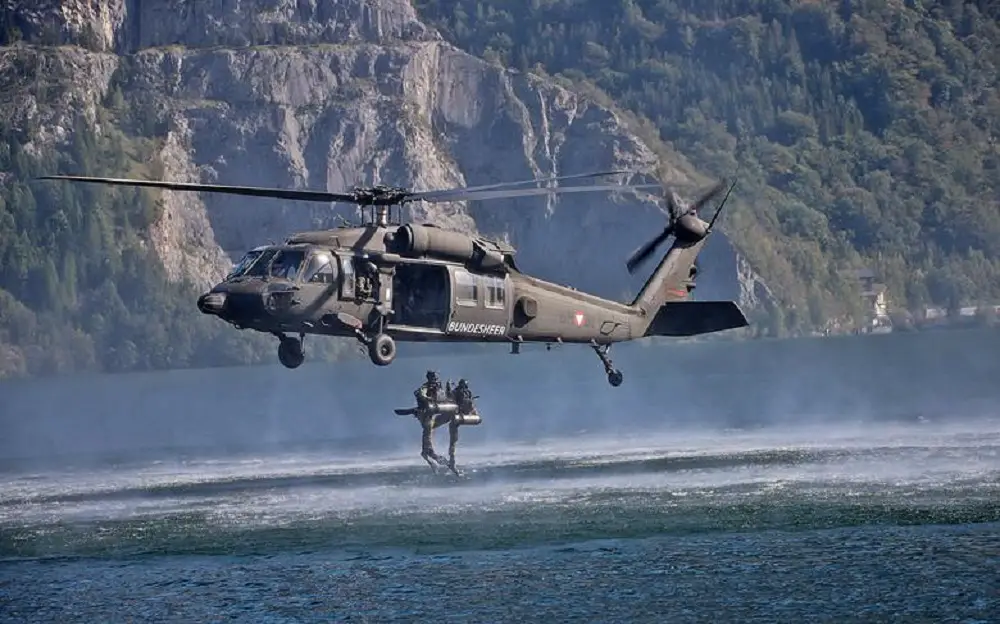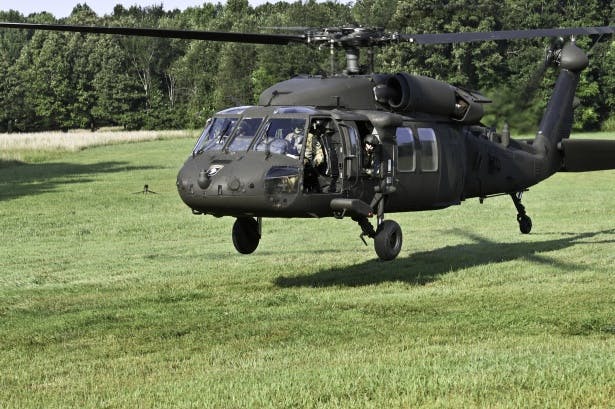Whatever You Need to Understand About the UH 60 Helicopter
The UH-60 helicopter, a cornerstone of U.S. Army aviation since its launching in 1979, stands for an amazing mix of engineering and functional convenience. Understood for its outstanding rate and range, the UH-60 has actually been adapted for different objectives, from army transport to clinical evacuation. As military needs develop, so also does the helicopter, with ongoing improvements aimed at enhancing its capabilities and incorporating modern technologies. To totally appreciate the significance of the UH-60 in contemporary army procedures, one have to consider its history, style, and the future advancements that can redefine its function.
Background of the UH-60
Created in the late 1970s, the UH-60 Black Hawk helicopter became an action to the U.S. Army's requirement for a functional energy helicopter that could do a selection of missions under challenging problems. The inspiration for its style was the imperfections recognized in the earlier helicopters utilized throughout the Vietnam War, especially in regards to speed, maneuverability, and survivability.
The Black Hawk was made by Sikorsky Aircraft, incorporating advanced modern technologies and products to boost its efficiency and longevity. It was officially introduced right into solution in 1979, promptly becoming a crucial asset for military operations - uh 60. Its capacity to transfer soldiers, clinical evacuation, and logistical assistance in both battle and humanitarian missions made the Black Hawk a vital part of the U.S. Army's air travel fleet
Throughout the years, the UH-60 has been continuously upgraded, adjusting to the transforming nature of warfare and the evolving needs of modern army procedures. Its operational background includes involvement in major problems, peacekeeping missions, and disaster alleviation efforts, solidifying its online reputation as a efficient and dependable helicopter in different atmospheres worldwide.

Layout and Specs
The layout of the UH-60 Black Hawk helicopter consistently mirrors a commitment to functional performance and convenience. Developed by Sikorsky Aircraft, this medium-lift energy helicopter includes a streamlined, aerodynamic body that boosts rate and maneuverability. Its tandem blades system, characterized by two counter-rotating blades, minimizes vibration and raises lift capacity, enabling more secure operations in varied environments.
The UH-60 is powered by 2 T700-GE-701C turboshaft engines, offering a maximum rate of roughly 180 knots and a series of around 400 maritime miles. Its robust airframe is created from sophisticated composite products, making certain resilience while maintaining a reasonably reduced weight. The helicopter has an optimum gross weight of concerning 22,000 extra pounds, sustaining a versatile payload configuration.

Duties and Objectives
A functional system, the UH-60 Black Hawk helicopter offers a wide range of functions and goals within military procedures. Designed mostly for army transport, it is qualified of lugging up to 11 soldiers, making it a necessary possession for quick release and logistical support.
Along with army transportation, the UH-60 masters medical emptying (MEDEVAC) objectives, outfitted resource with advanced medical tools to supply critical care during transportation. Its capability to run in varied environments boosts its performance in battle search and rescue (CSAR) operations, where speedy extraction of employees is essential.
The helicopter also plays a significant role in reconnaissance and monitoring goals, making use of onboard sensing units and tools to debrief. Moreover, its convenience extends to logistical support, qualified of moving products and tools to forward running bases - uh 60.
In combat procedures, the UH-60 can be outfitted with various tool systems, allowing it to provide close air assistance. Its multi-role ability makes the Black Hawk a crucial device for contemporary military pressures, adjusting perfectly to the progressing needs of battleground circumstances and making certain objective success across a variety of operational contexts.
Performance and Capacities
Recognized for its robust performance, the UH-60 Black Hawk helicopter boasts remarkable abilities that enhance its functional efficiency throughout numerous missions. uh 60. This multi-role airplane is outfitted with powerful twin-engine Turbomeca Arriel 1D1 engines, providing exceptional rate and maneuverability, with a maximum cruise ship speed of about 150 knots and a functional series of around 400 nautical miles
The Black Hawk's innovative avionics and fly-by-wire control systems substantially improve flight safety and security and handling, enabling it to run in diverse settings, consisting of negative climate condition. Its adaptability is additional exhibited by its capability to carry approximately 11 completely equipped troops or a haul of roughly 8,000 pounds, making it suitable for troop transport, clinical discharge, and logistical support goals.
Additionally, the UH-60 is developed for survivability, including strengthened airframes, ballistic defense for team and travelers, and progressed countermeasure systems to avert threats. The helicopter's agility and speed, incorporated with its capacity for rapid implementation, make it an important property in modern investigate this site military procedures, ensuring that it remains a crucial element of tactical air assistance and battleground wheelchair.
Future Dope

One substantial focus is the assimilation of sophisticated avionics systems, which will certainly enhance situational awareness via improved navigating and interaction capacities. This includes the possible use artificial intelligence to help pilots in decision-making and mission planning.
In addition, future versions may include advanced products and design features to boost the helicopter's sturdiness and reduce its radar trademark, improving survivability in opposed atmospheres.
The intro of hybrid-electric propulsion systems is also imminent, intending to improve gas effectiveness and minimize logistical problems. Such advancements might expand operational array and reduce the helicopter's environmental impact.

Conclusion
The UH-60 helicopter stands for a significant development in army aeronautics considering that its introduction in 1979. Its durable layout, flexible abilities, and continuous upgrades guarantee its significance in numerous functional duties, consisting of army transport and clinical evacuation. As modern technology progresses, future developments will likely boost its performance with the assimilation of synthetic intelligence and hybrid-electric systems. The UH-60's enduring existence underscores its crucial role in modern army operations and highlights the recurring evolution of armed forces air travel technology.
The UH-60 helicopter, a foundation of U.S. Army aviation because its launching in 1979, stands for an amazing mix of design and operational their explanation convenience. As army needs progress, so also does the helicopter, with recurring developments intended at boosting its capacities and incorporating modern innovations.The style of the UH-60 Black Hawk helicopter constantly mirrors a dedication to functional effectiveness and convenience. Created by Sikorsky Aircraft, this medium-lift energy helicopter includes a smooth, wind resistant body that improves rate and maneuverability.The UH-60 helicopter stands for a significant development in armed forces aeronautics because its introduction in 1979.